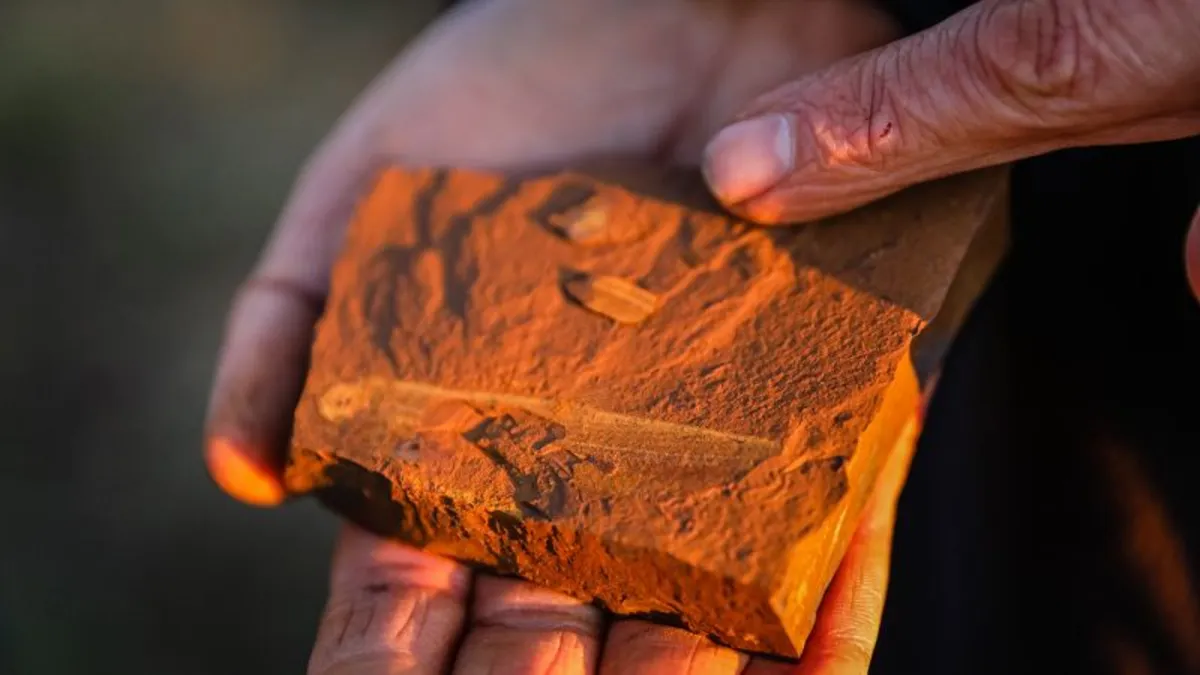
Sign up for CNN’s Wonder Theory science newsletter to explore the universe with captivating news on remarkable discoveries, scientific advancements, and more.
Paleontologists have made a groundbreaking discovery with the identification of a newly recognized fish species in Australia. This species, named Ferruaspis brocksi, is so well-preserved that researchers were able to determine its last meal, dating back to the Miocene Epoch, approximately 16 million years ago. The fossilized remains of F. brocksi were unearthed at the McGraths Flat site in central New South Wales, as detailed in a study published on March 17 in the Journal of Vertebrate Paleontology.
The research team excavated multiple fossils of F. brocksi, each encased in goethite, an iron-rich mineral that preserved the fish in remarkable detail. This exceptional fossilization process enabled scientists to investigate various structural features of the species, including its soft tissues, stomach contents, and coloration patterns. Dr. Michael Frese, a study coauthor and associate professor at the University of Canberra, expressed his astonishment at the preservation quality, stating, “It’s very surprising, and it’s extremely rare to be able to tell the color of a fossil fish like this.”
Beyond the identification of this new species, researchers have uncovered the first detailed evidence of the Osmeriformes group, which includes present-day graylings and smelts, in Australia. Previously, scientists could only speculate about the arrival of smelts on the continent due to a lack of fossil evidence. This discovery provides vital insights into the region’s ancient ecosystem, according to Dr. Frese.
Using advanced microscopy techniques, paleontologists analyzed the stomach contents of F. brocksi and discovered that it primarily consumed various types of phantom midge larvae, along with insect wings and even a small bivalve. Dr. Anthony Martin, a professor of practice in environmental sciences at Emory University, noted that understanding the fish’s diet helps to construct a clearer picture of the food chains and food webs in ancient environments.
One particularly remarkable specimen of F. brocksi had a freshwater mussel attached to its tail fin, which is noteworthy because the lake sediments where these fossils were found would not have supported the bivalve in reaching sexual maturity. Dr. Frese pointed out that this suggests a possible connection between the fossil site and a nearby river, indicating that the fish may have contracted parasites from the river.
The analysis of stomach contents not only revealed the diet of F. brocksi but also provided clues about its feeding patterns. Dr. Frese explained that many extant species of Chaoborus (phantom midge larvae) do not inhabit lakes with fish, and those that do often migrate to avoid predation during the day. This suggests that F. brocksi likely preyed on these larvae during nighttime hours.
One of the most intriguing aspects of this discovery was the identification of melanophores, which are pigmented cells that provide insight into the fish’s coloration. The fossils indicate that F. brocksi had a slender body similar to modern smelts, with countershading that features a darker top and a lighter underside, along with two stripes along its body. This coloration could suggest shoaling behavior, where fish swim in groups, and it likely helped the species evade predators.
Today, central New South Wales is characterized by plains and plateaus, but during the Miocene, the landscape was dominated by lush rainforests. The discovery of F. brocksi west of the Great Dividing Range indicates that, unlike most surviving Osmeriformes, this species may have lived exclusively in freshwater throughout its life. Dr. Frese emphasized that while this study focuses on one fish species, it contributes to a broader understanding of the ecosystem being reconstructed through ongoing fossil excavations at the site.